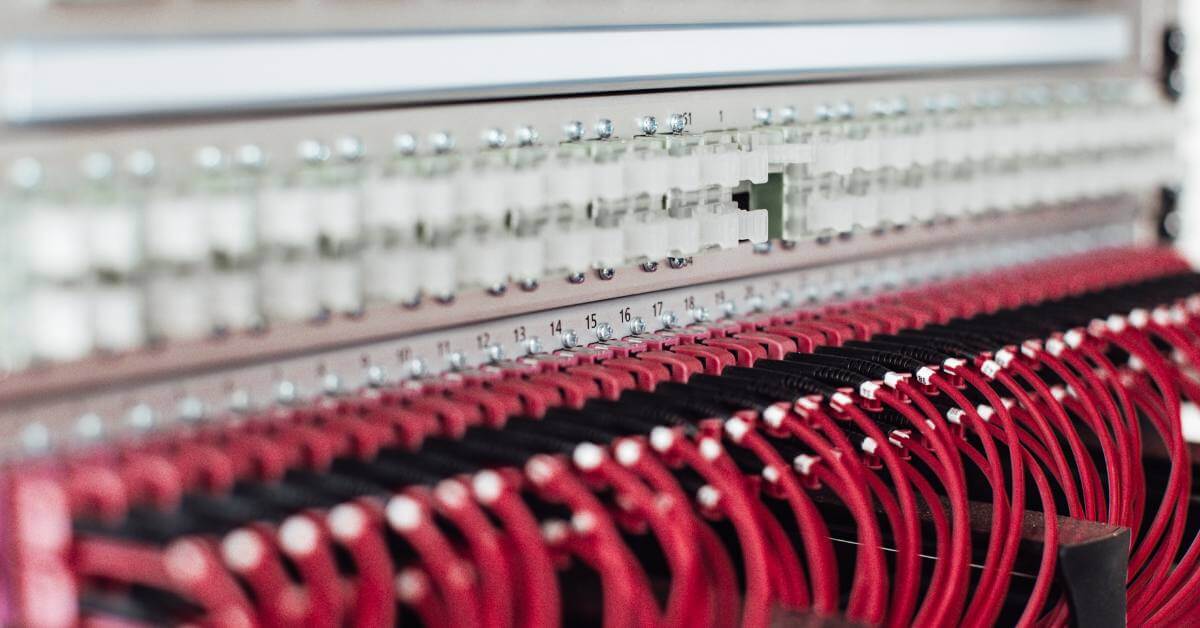A large data center facility caters to your area's growing demands for cloud services and digital applications. However, due to budget constraints and rushed implementation, the data center networking infrastructure could have been better designed and needed more energy and efficiency considerations.
Numerous outdated networking switches and routers consume excessive power. The cabling infrastructure is broken. Redundancy is compromised, resulting in single points of failure and the need for constant maintenance. Network reliability and performance suffered. Frequent network outages and connectivity issues disrupted critical services hosted in the data center. The data center's reputation hit, and clients lost their reliability.
As a big data company needing help to store, track, and manage your data, you want to avoid this situation at all costs. Luckily, efficient and robust datacenter networking is possible. And it enables seamless communication, high performance, and scalability within your data center environment.
How do you ensure you can achieve these three things? Here are seven must-have requirements for a data center networking platform that works for you - not against you.
7 Must-Have Requirements for Datacenter Networking
Datacenter networking refers to the systems and infrastructure that enable communication and data transfer in a datacenter environment. It requires secure and efficient connections to servers, storage devices, clouds, and other network equipment securely and efficiently. The result is a robust network infrastructure that ensures seamless communication, high performance, and scalability within the datacenter.
Implementing precise requirements for your data center networking platform will ensure smooth operations, deliver quality services, and support effective business growth. Here are seven we’d recommend to optimize and protect your network infrastructure.
1. Network Architecture
Most companies choose one of two network architectures: hierarchical or spine-and-leaf. In the hierarchical architecture, multiple switch and router layers facilitate connectivity. On the other hand, the spine-and-leaf architecture connects leaf switches directly to spine switches, offering a more scalable and flexible approach. Your choice should depend on factors like your datacenter's size, scalability requirements, and traffic patterns.
2. Switching and Routing
Use high-performance switches and routers to handle network traffic efficiently. Ethernet is the most common protocol to interconnect devices due to its widespread support and compatibility. However, you might consider other protocol types like Fiber Channel and InfiniBand based on specific requirements or technologies used in your datacenter.
3. Virtualization
Virtual LANs (VLANs) and Virtual Extensible LANs (VXLAN) provide logical separation, better manageability, and flexibility within your datacenter network. VLANs divide the network into multiple logical segments, while VXLAN enables network virtualization at scale. Whatever virtualization you choose, keep your network flexibility and scalability needs in mind to make the right choice.
4. Storage Area Networking (SAN)
Consider SAN technologies to provide high-speed, dedicated storage networks and connect storage devices to servers. Two popular choices are Fibre Channel and iSCI. The First is a mature and reliable technology suitable for high-performance storage requirements, while iSCSI is more cost-effective, leveraging existing Ethernet infrastructure. The choice depends on factors such as performance, budget, and infrastructure.
5. Load Balancing
Use load balancing to distribute incoming requests across multiple servers and prevent overwhelming any single server with excessive traffic. Round-robin, weighted round-robin, least connection, and IP hash are standard load-balancing techniques that distribute the workload to improve performance, enhance scalability, and avoid bottlenecks.
Load balancing also helps monitor the health and availability of servers, distribute traffic based on predefined algorithms, and provide failover capabilities to ensure uninterrupted service and a better user experience.
6. Software-Defined Networking (SDN)
Software-Defined Networking (SDN) allows your business to adapt to rapidly changing requirements, simplify network management tasks, or enable rapid deployment. It brings centralized control and programmability to network management, allowing administrators to manage the entire network through a software-based controller. This controller communicates with network devices through an open protocol to improve flexibility and dynamically define network policies and traffic flows.
7. Network Security
Last but certainly not least, network security and governance protect sensitive data, prevent unauthorized access, and mitigate various security threats. You can achieve it by implementing several security measures like firewalls, intrusion detection and prevention systems (IDPS), VPNs, access control mechanisms, and more. While each security measure has its own specific goal, they work together to protect your data and infrastructure from unauthorized access or malicious activities.
How Datacenter Networking Helps Companies
Datacenter networking provides several crucial advantages for companies relying on data center services. However, three stand out:
1. Communication
Components like computing nodes, storage arrays, and networking equipment must exchange data seamlessly in a datacenter environment. Reliable, fast, and accurate communication between these components, storage systems, and other devices allows your infrastructure to work smoothly and efficiently for better performance, low latency, and minimal packet loss.
2. High-Performance
Data center networking also handles the substantial network traffic generated by the datacenter's numerous interconnected devices and services. High-performance networking components (like switches and routers equipped with advanced forwarding capabilities, ample buffering, and low-latency interfaces) ensure data is transmitted quickly and efficiently to minimize latency and maximize throughput.
Efficient network protocols like the Transmission Control Protocol (TCP) and User Datagram Protocol (UDP) also play a vital role in delivering high-performing data transmission within the datacenter. These protocols ensure reliable data delivery and provide congestion control mechanisms to optimize network performance by reducing processing overhead, increasing network efficiency, and improving overall data center performance.
3. Scalability
Finally, data center networking facilitates resource scaling to accommodate increased workloads. You can add or remove servers, storage devices, and other network equipment like modular switches and routers. This scalability lets your business grow incrementally without significant disruptions or infrastructure overhauls.
Find Your Ideal Datacenter Networking Partner or Integrator
The story of the poorly-designed datacenter networking infrastructure is more than a cautionary tale for businesses that rely on them to store, track, and manage their valuable data. It’s a testimony to just how vital successful datacenter networking infrastructure is.
Efficient communication and scalability ensure smooth operations and minimize disruptions, and high-performance networking components optimize performance for applications and services hosted within the data center. However, meeting these requirements can be complex and challenging without the right expertise and guidance.
This is where a trusted data center partner or integrator comes into play. Choosing the right partner ensures you can optimize your datacenter networking infrastructure effectively and provides expert guidance in selecting the appropriate requirements to align with your specific needs and goals.
At Redapt, we understand the critical importance of data center networking and its impact on your business success. Whether you want to integrate, build or deploy a customized solution, our team will work closely with you to identify the enterprise infrastructure solutions that align with your specific requirements and goals.
Categories
- Cloud Migration and Adoption
- Enterprise IT and Infrastructure
- Artificial Intelligence and Machine Learning
- Data Management and Analytics
- DevOps and Automation
- Cybersecurity and Compliance
- Application Modernization and Optimization
- Featured
- Managed Services & Cloud Cost Optimization
- News
- Workplace Modernization
- Tech We Like
- AWS
- Social Good News
- Cost Optimization
- Hybrid Cloud Strategy
- NVIDIA
- Application Development
- GPU






